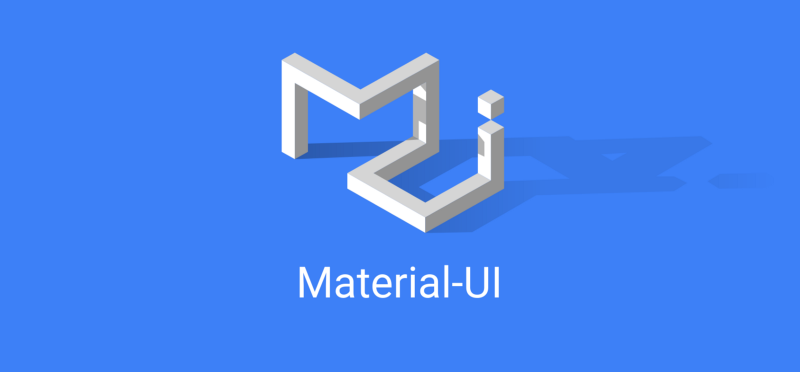Revolutionize Your Web Design with Material UI: The Ultimate Toolkit for Stunning UI/UX
 Jeffrey Egbadon
Jeffrey Egbadon
Introduction
Material UI is a user interface (UI) component library that enables developers to create beautiful and responsive web applications using the React framework. It is based on Google's Material Design, a visual language for UI that has gained widespread popularity for its clean, modern look and feel. Material UI offers a wide range of pre-built components that can be easily integrated into your React applications, helping you to save time and effort.
In this article, we will explore Material UI in detail, explaining its key features, how to use it in your projects, and providing examples of common components. Whether you are a beginner or an experienced developer, this guide will provide you with the knowledge and tools you need to start building beautiful and responsive web applications using Material UI.
Getting Started with Material UI
Before we dive into the details of Material UI, let's first understand how to get started with it. To use Material UI, you need to have a basic understanding of the React framework, which is a popular JavaScript library for building user interfaces. If you are new to React, we recommend that you first complete some beginner-level tutorials before diving into Material UI.
Once you have a basic understanding of React, you can get started with Material UI by installing it in your project. To do this, you can use the following command:
npm install @material-ui/core
This will install the Material UI core components and their dependencies in your project. Once installed, you can import any component you need from Material UI and start using it in your project.
Material UI Components
Material UI offers a wide range of components that you can use to build your web applications. These components are pre-built and can be easily customized to fit your application's specific needs. Some of the most commonly used components in Material UI include:
Buttons - Material UI offers a range of buttons that can be used for various purposes, including flat buttons, raised buttons, icon buttons, and floating action buttons.
Cards - Cards are containers that hold content, such as images and text. Material UI offers various types of cards, including media cards, action cards, and interactive cards.
Dialogs - Dialogs are pop-up windows that display content or messages. Material UI offers various types of dialogs, including simple dialogs, alert dialogs, and confirmation dialogs.
Grid - Grid is a layout system that allows you to create responsive designs that adapt to different screen sizes. Material UI's grid system is based on a 12-column layout, and you can use it to create both simple and complex layouts.
Icons - Material UI offers a range of icons that you can use to enhance your application's visual design. These icons are vector-based and can be easily customized to fit your application's specific needs.
Inputs - Inputs are components that allow users to enter data into your application. Material UI offers various types of inputs, including text fields, checkboxes, radio buttons, and switches.
Menus - Menus are components that display a list of options that users can choose from. Material UI offers various types of menus, including simple menus, drop down menus, and context menus.
Tables - Tables are components that display data in a tabular format. Material UI offers various types of tables, including simple tables, sortable tables, and data grid tables.
These are just a few examples of the components that Material UI offers. You can find a full list of components on the Material UI website.
Styling with Material UI
In addition to its pre-built components, Material UI also offers a powerful styling system that enables you to customize the look and feel of your web applications. Material UI's styling system is based on the JSS (JavaScript Style Sheets) library, which allows you to write styles as JavaScript objects. This makes it easy to integrate styles with your React components and allows you to create reusable styles that can be shared across multiple components.
To get started with styling in Material UI, you can create a theme object that defines the colours, typography, and other visual properties of your application. Here is an example of how to create a basic theme object:
import { createTheme } from '@material-ui/core/styles';
const theme = createTheme({
palette: {
primary: {
main: '#2196f3',
},
secondary: {
main: '#f50057',
},
},
typography: {
fontFamily: 'Roboto',
},
});
In this example, we are creating a theme object that defines the primary and secondary colors of the application, as well as the default typography. Once you have defined your theme object, you can use it to customize the styles of individual components. Here is an example of how to customize the styles of a button using the theme object:
import { Button } from '@material-ui/core';
function MyButton() {
return (
<Button variant="contained" color="primary">
Click me
</Button>
);
}
In this example, we are creating a button component using the Button component from Material UI. We are using the variant and color props to customize the appearance of the button, and the styles defined in the theme object are automatically applied to the button.
Customizing Material UI Components
While Material UI provides a wide range of pre-built components, you may need to customize these components to fit your application's specific needs. Fortunately, Material UI provides a range of customization options that enable you to modify the behaviour and appearance of its components.
One of the primary ways to customize Material UI components is by using props. Most components in Material UI offer a range of props that you can use to modify their behaviour and appearance. For example, the Button component offers props such as variant, color, and size that you can use to customize the appearance of the button.
In addition to props, Material UI also provides a range of APIs that enable you to customize the behaviour of its components. For example, you can use the useStyles hook to customize the styles of a component. Here is an example of how to customize the styles of a button using the useStyles hook:
import { Button } from '@material-ui/core';
import { makeStyles } from '@material-ui/core/styles';
const useStyles = makeStyles((theme) => ({
button: {
backgroundColor: theme.palette.primary.main,
color: theme.palette.primary.contrastText,
borderRadius: theme.shape.borderRadius,
padding: theme.spacing(2),
},
}));
function MyButton() {
const classes = useStyles();
return (
<Button className={classes.button}>
Click me
</Button>
);
}
In this example, we are using the useStyles hook to define custom styles for the button. We are using the palette and shape properties of the theme object to customize the button's appearance, and the styles are applied to the button using the className prop.
Conclusion
In conclusion, Material UI is a powerful and flexible UI component library that can help you to create beautiful and responsive web applications using the React framework. In this article, we have explored the key features of Material UI, how to get started with it, and how to use its pre-built components and styling system to create custom UIs. Whether you are a beginner or an experienced developer, Material UI provides a wide range of tools and resources to help you build high-quality web applications quickly and easily. So why not give it a try and see for yourself how Material UI can simplify and enhance your web development experience.
Remember that while Material UI provides a powerful set of pre-built components, you can always customize them to fit your specific needs using props and APIs. Also, make sure to take advantage of the theming system, which makes it easy to create a consistent and visually appealing design system for your application.
In addition to the resources mentioned in this article, Material UI provides comprehensive documentation, including API references, guides, and examples, which can be found on their website. The Material UI community is also active and supportive, with forums and social media channels where you can get help and share your experiences.
Overall, Material UI is a great choice for building modern and responsive web applications with React. Its powerful set of pre-built components, theming system, and customization options make it easy to create beautiful and functional user interfaces. So, if you are starting a new web development project or looking to improve an existing one, consider using Material UI and see for yourself how it can enhance your development process and user experience.
Subscribe to my newsletter
Read articles from Jeffrey Egbadon directly inside your inbox. Subscribe to the newsletter, and don't miss out.
Written by
